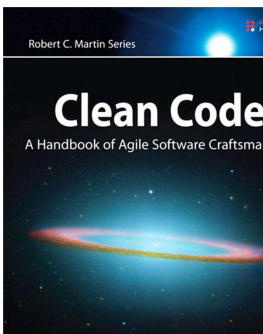Feathers - Working Effectively with Legacy Code
Here you can read online Feathers - Working Effectively with Legacy Code full text of the book (entire story) in english for free. Download pdf and epub, get meaning, cover and reviews about this ebook. City: Upper Saddle River;N.J, year: 2013;2005, publisher: Pearson Education Limited (US titles);Prentice Hall, genre: Computer. Description of the work, (preface) as well as reviews are available. Best literature library LitArk.com created for fans of good reading and offers a wide selection of genres:
Romance novel
Science fiction
Adventure
Detective
Science
History
Home and family
Prose
Art
Politics
Computer
Non-fiction
Religion
Business
Children
Humor
Choose a favorite category and find really read worthwhile books. Enjoy immersion in the world of imagination, feel the emotions of the characters or learn something new for yourself, make an fascinating discovery.

Working Effectively with Legacy Code: summary, description and annotation
We offer to read an annotation, description, summary or preface (depends on what the author of the book "Working Effectively with Legacy Code" wrote himself). If you haven't found the necessary information about the book — write in the comments, we will try to find it.
Working Effectively with Legacy Code — read online for free the complete book (whole text) full work
Below is the text of the book, divided by pages. System saving the place of the last page read, allows you to conveniently read the book "Working Effectively with Legacy Code" online for free, without having to search again every time where you left off. Put a bookmark, and you can go to the page where you finished reading at any time.
Font size:
Interval:
Bookmark:
This series is directed at software developers, team-leaders, business analysts, and managers who want to increase their skills and proficiency to the level of a Master Craftsman.
The series contains books that guide software professionals in the principles, patterns, and practices of programming, software project management, requirements gathering, design, analysis, testing, and others.
Michael C. Feathers

Prentice Hall Professional Technical Reference
Upper Saddle River, NJ 07458
www.phptr.com
The authors and publisher have taken care in the preparation of this book, but make no expressed or implied warranty of any kind and assume no responsibility for errors or omissions. No liability is assumed for incidental or consequential damages in connection with or arising out of the use of the information or programs contained herein.
Publisher: John Wait
Editor in Chief: Don OHagan
Acquisitions Editor: Paul Petralia
Editorial Assistant: Michelle Vincenti
Marketing Manager: Chris Guzikowski
Publicist: Kerry Guiliano
Cover Designer: Sandra Schroeder
Managing Editor: Gina Kanouse
Senior Project Editor: Lori Lyons
Copy Editor: Krista Hansing
Indexer: Lisa Stumpf
Compositor: Karen Kennedy
Proofreader: Debbie Williams
Manufacturing Buyer: Dan Uhrig
Prentice Hall offers excellent discounts on this book when ordered in quantity for bulk purchases or special sales, which may include electronic versions and/or custom covers and content particular to your business, training goals, marketing focus, and branding interests. For more information, please contact:
U. S. Corporate and Government Sales
1-800-382-3419
For sales outside the U. S., please contact:
International Sales
1-317-428-3341
Visit us on the web: www.phptr.com
Library of Congress Cataloging-in-Publication Data: 2004108115
Copyright 2005 Pearson Education, Inc.
Publishing as Prentice Hall PTR
All rights reserved. Printed in the United States of America. This publication is protected by copyright, and permission must be obtained from the publisher prior to any prohibited reproduction, storage in a retrieval system, or transmission in any form or by any means, electronic, mechanical, photocopying, recording, or likewise. For information regarding permissions, write to:
Pearson Education, Inc.
Rights and Contracts Department
One Lake Street
Upper Saddle River, NJ 07458
Other product or company names mentioned herein are the trademarks or registered trademarks of their respective owners.
ISBN 0-13-117705-2
Text printed in the United States on recycled paper at Phoenix Book Tech. First printing, September 2004
For Ann, Deborah, and Ryan,
the bright centers of my life.
Michael
...then it began...
In his introduction to this book, Michael Feathers uses that phrase to describe the start of his passion for software.
...then it began...
Do you know that feeling? Can you point to a single moment in your life and say: ...then it began...? Was there a single event that changed the course of your life and eventually led you to pick up this book and start reading this foreword?
I was in sixth grade when it happened to me. I was interested in science and space and all things technical. My mother found a plastic computer in a catalog and ordered it for me. It was called Digi-Comp I. Forty years later that little plastic computer holds a place of honor on my bookshelf. It was the catalyst that sparked my enduring passion for software. It gave me my first inkling of how joyful it is to write programs that solve problems for people. It was just three plastic S-R flip-flops and six plastic and-gates, but it was enoughit served. Then... for me... it began...
But the joy I felt soon became tempered by the realization that software systems almost always degrade into a mess. What starts as a clean crystalline design in the minds of the programmers rots, over time, like a piece of bad meat. The nice little system we built last year turns into a horrible morass of tangled functions and variables next year.
Why does this happen? Why do systems rot? Why cant they stay clean?
Sometimes we blame our customers. Sometimes we accuse them of changing the requirements. We comfort ourselves with the belief that if the customers had just been happy with what they said they needed, the design would have been fine. Its the customers fault for changing the requirements on us.
Well, heres a news flash: Requirements change. Designs that cannot tolerate changing requirements are poor designs to begin with. It is the goal of every competent software developer to create designs that tolerate change.
This seems to be an intractably hard problem to solve. So hard, in fact, that nearly every system ever produced suffers from slow, debilitating rot. The rot is so pervasive that weve come up with a special name for rotten programs. We call them: Legacy Code.
Legacy code. The phrase strikes disgust in the hearts of programmers. It conjures images of slogging through a murky swamp of tangled undergrowth with leaches beneath and stinging flies above. It conjures odors of murk, slime, stagnancy, and offal. Although our first joy of programming may have been intense, the misery of dealing with legacy code is often sufficient to extinguish that flame.
Many of us have tried to discover ways to prevent code from becoming legacy. Weve written books on principles, patterns, and practices that can help programmers keep their systems clean. But Michael Feathers had an insight that many of the rest of us missed. Prevention is imperfect. Even the most disciplined development team, knowing the best principles, using the best patterns, and following the best practices will create messes from time to time. The rot still accumulates. Its not enough to try to prevent the rotyou have to be able to reverse it.
Thats what this book is about. Its about reversing the rot. Its about taking a tangled, opaque, convoluted system and slowly, gradually, piece by piece, step by step, turning it into a simple, nicely structured, well-designed system. Its about reversing entropy.
Before you get too excited, I warn you; reversing rot is not easy, and its not quick. The techniques, patterns, and tools that Michael presents in this book are effective, but they take work, time, endurance, and care. This book is not a magic bullet. It wont tell you how to eliminate all the accumulated rot in your systems overnight. Rather, this book describes a set of disciplines, concepts, and attitudes that you will carry with you for the rest of your career and that will help you to turn systems that gradually degrade into systems that gradually improve.
Robert C. Martin
29 June, 2004
Do you remember the first program you wrote? I remember mine. It was a little graphics program I wrote on an early PC. I started programming later than most of my friends. Sure, Id seen computers when I was a kid. I remember being really impressed by a minicomputer I once saw in an office, but for years I never had a chance to even sit at a computer. Later, when I was a teenager, some friends of mine bought a couple of the first TRS-80s. I was interested, but I was actually a bit apprehensive, too. I knew that if I started to play with computers, Id get sucked into it. It just looked too cool. I dont know why I knew myself so well, but I held back. Later, in college, a roommate of mine had a computer, and I bought a C compiler so that I could teach myself programming. Then it began. I stayed up night after night trying things out, poring through the source code of the emacs editor that came with the compiler. It was addictive, it was challenging, and I loved it.
Font size:
Interval:
Bookmark:
Similar books «Working Effectively with Legacy Code»
Look at similar books to Working Effectively with Legacy Code. We have selected literature similar in name and meaning in the hope of providing readers with more options to find new, interesting, not yet read works.
Discussion, reviews of the book Working Effectively with Legacy Code and just readers' own opinions. Leave your comments, write what you think about the work, its meaning or the main characters. Specify what exactly you liked and what you didn't like, and why you think so.









